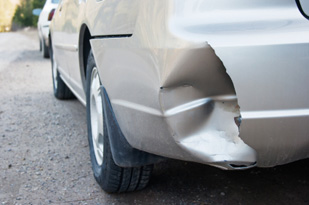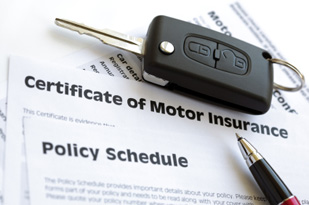Auto/Car Insurance

What is Auto Insurance?
Or get an auto insurance quote through ERIE Insurance
Auto insurance is meant to protect you if you cause injuries to others or damage their property in an auto accident. It can also provide protection if your car is damaged in an accident or is stolen. What protection you have is spelled out in your auto insurance policy.
An auto insurance policy is a contract between you and an insurance company. You, the customer, pay a certain amount (“premium”) to the insurance company in exchange for a set of coverages you selected. Your policy sets forth what the insurance company will or will not cover.
If you are an Uber Driver or Lyft Driver, you need additional ridesharing insurance.
What does auto insurance cover?
At a high level, auto insurance typically provides four basic things—liability coverages (for injuries to others and damage to their property), coverage for damage to your car or cars, coverage for medical expenses and uninsured motorist coverages (for situations where someone without enough insurance injures you or a family member). There are a variety of coverage options available; they may vary by state and company.
What are the common auto insurance coverages?
Below are some simplified descriptions of common auto insurance coverages. All coverages are subject to the limits, terms and conditions of the actual policy you purchase.
- Liability
- Collision
- Comprehensive
- Personal Injury
- Uninsured Motorists
Bodily injury liability coverage generally pays damages for bodily injuries to the driver and passengers of the other vehicle when you are responsible for an accident. It also provides coverage to defend you if you are sued because of an auto accident.
Property damage liability coverage generally pays for damages to another person’s property (e.g. their car) when you are responsible for an accident. It also provides coverage to defend you if you are sued because of an auto accident.
Medical payments coverage generally covers you, household relatives and your passengers for medical expenses that result from injuries sustained in an auto accident. It also covers you as a pedestrian if you are hit by a vehicle.
Some states have personal injury protection (PIP) in place of, or in addition to, medical payments coverage. This is also known as no-fault coverage. PIP can generally pay for medical expenses, funeral expenses, loss of income and other expenses for injuries or death due to bodily injury sustained as the result of a car accident.
Uninsured or underinsured motorist bodily injury coverage generally pays for damages for bodily injury to you and your passengers when caused by another in an auto accident and the person legally responsible either has inadequate or no insurance. This coverage varies greatly by state. In some states it may be a combined coverage, while other states may offer it as two separate coverages (e.g. one for uninsured motorists and one for underinsured motorists).
Collision coverage generally pays for damage to your car if it hits another car, object, or overturns. A deductible applies to this coverage.
Comprehensive coverage generally pays for damage to your car if it is stolen or damaged by certain causes other than collision, such as fire, theft, hail or vandalism. A deductible applies to this coverage.

What should I consider when purchasing auto insurance?
When purchasing auto insurance, make sure you find coverage that fits your needs. Think about you and your family’s specific circumstances, including your risk tolerance and your budget.
If you aren’t sure what type of things you should consider, read below. Or, get help by working with an insurance agent or by calling an insurance company directly. Below are a few simple questions to help you start evaluating your needs.
- What is my household salary? What are my assets? How much in savings and equity do I have? Generally, the higher your salary and net worth, the more you stand to lose if you are ever found liable for an accident. The more assets you have, the more coverage you might want to consider.
- How old is my car and how much is it worth? Do I own my car outright or is it leased or financed? The model year and original cost of your car helps determine the approximate value of your car today. If the value of the car is low and you own it outright (i.e. no loan or lease), you may want to think about whether you really want comprehensive or collision coverages. On the other hand, if you lease or finance your car, your lender or car dealership probably requires comprehensive and/or collision coverage.
- How much am I willing to pay out-of-pocket? Deductibles are applicable to certain coverages, such as comprehensive and collision coverages. In the event of a loss, a deductible is the amount that you must pay out-of-pocket before your insurance kicks in. A higher deductible could lower your premium.
- Do I have health insurance? Auto insurance can include medical payments coverage for you and your passengers. If you don’t have your own health insurance, you should consider purchasing some type of medical payments coverage on your policy.
- Do I have children of driving age? Children are generally more inexperienced drivers and can present a greater risk on the road. If you have children of driving age, you might want to consider purchasing higher limits of liability coverage.
What does an auto insurance policy consist of?
An auto policy generally consists of three main parts, which together, form your auto policy.
It is important to read your declaration page, base policy and any applicable endorsements together, as they collectively form your insurance policy.
- Declaration page – the declarations page (or “declarations” or “dec page”) displays information specific to you and your policy. This will usually include the name of the policyholder, your policy number, the policy term, limits of liability and deductibles you selected and the policy premium. It can also display other items such as discounts applicable to your policy, other drivers on your policy and specific vehicles insured. In addition, it will show the other documents that form your policy (in other words, it will tell you what base policy and endorsements make up your policy). The declarations page is usually longer than just one page.
- Base Policy – this document spells out the basic provisions of the insurance coverage and the responsibilities of the insurance company. It also sets forth your responsibilities, which include paying your premium and telling the company when you are in an accident.
- Endorsements – endorsements alter the base policy, just like an amendment alters a contract. Endorsements can add, broaden, limit or delete coverage or change the base policy in any other way.
Note: auto ID cards, which generally arrive with your policy, do not actually form part of the policy. Rather, they provide a convenient way to show that you have insurance. They contain some basic details about your policy, such as your policy number, policy effective date and the specific vehicle insured. Some states require that you keep these in your car as proof of insurance.